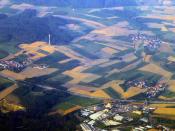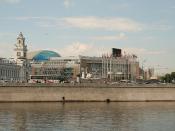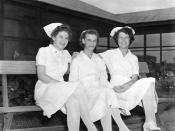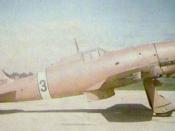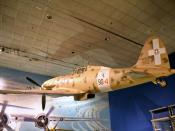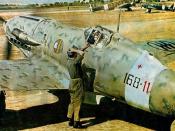The Mitsubishi Zero was the primary Japanese Naval fighter in World War II. It was used in the attack on Pearl Harbor and in Kamikaze attacks near the end of the war. Allied pilots were astounded by its maneuverability, and it was very successful in combat until the Allies devised tactics to utilize their advantage in firepower and diving speed.
The Supermarine Spitfire is a legend in British air history. With the Hawker Hurricane, it successfully defended England against the Luftwaffe in the Battle of Britain, and throughout the war it saw service on every major front. Performance and handling were superb. The Mk.VII, the second high-altitude version developed, was used in England and the Middle East. Several Mk 2EXVIs, the last production version to use the Merlin engine, remained in service through 1950. In all, 20,351 Spitfires were built
Many people consider the P-51 Mustang the best fighter of World War II. Its combination of speed, range, maneuverability, and firepower gave it great versatility. Its use in all major theaters of the war included long-range high-altitude escort, strafing, and photo reconnaissance.
Originally developed by North American for the British, the Mustang was later ordered in large quantities by the U.S. Army Air Forces. This P-51 is displayed in the markings of the 351st Fighter Squadron, 353rd Fighter Group,Eighth Air Force.
The world became aware of the Messerschmitt Bf. 109 during the Battle of Britain, and it is to this day Germany's best known aircraft. Its success lay in its maneuverability and its accurate and stable handling. Throughout World War II, new models were developed; the Bf. 109G-6 "Gustav" was among the best. The first G-6s were delivered to fighter units in 1942 and saw extensive service on the Eastern Front.
This Bf. 109G-6 is shown in the markings of a fighter of the 7th Squadron, 3rd Group, 27th Wing, which operated over the Eastern Mediterranean.
Macchi C.202 Folgore
Designed in 1940, the Macchi C.202 Folgore (Lightning) was the most effective Italian fighter used in quantity during World War II. About 1,200 Folgores were operational from late 1941 through the end of the war. After the Italian Armistice, Folgores were flown against Germany by the Italian
Cobelligerant Air Force. The Folgore's performance and maneuverability were excellent; however, its armament was inferior to other contemporary fighters.
This Macchi C.202 is shown in the markings of the 90B0 Squadriglia, 10B0 Gruppo, 4B0 Stormo.
Martin B-26B Marauders saw action throughout World War II in the Pacific, North Africa, and Europe. These high-performance medium bombers were employed successfully against bridges, airfields, railroad yards, V-1 "buzz bomb" launch sites, and other tactical targets.
Flak Bait served with the 449th Bombardment Squadron, 322nd Bombardment Group, Eighth and Ninth Air Forces. This famous B-26 flew from bases in England and, after D-Day (on which it flew two missions), from bases in France and Belgium.
In 21 months, Flak Bait acquired more than 1,000 holes, had its hydraulic system shot out twice and its electrical system once, returned twice on one engine, and came back once with an engine on fire. By war's end, it had flown 202 bombing missions, more than any other American bomber over Europe.
